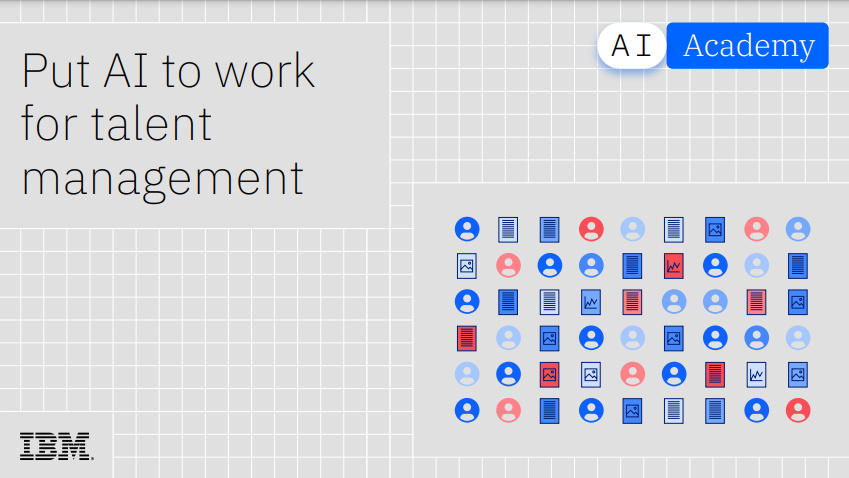How will we staff the IT workforce of the future?
In the face of breakthrough technologies, STEM education isn't enough

Over the past several years, technology has become an increasingly important aspect of how we live and work. As such, demand for skilled IT professionals is increasing almost exponentially, but there aren't enough people with the appropriate training to fill those empty roles.
This aspect of the skills gap is well established and has led governments, including our own, to put increased emphasis on STEM (science, technology, engineering and maths) education.
New developments like the rise of artificial intelligence (AI), machine learning (ML) and automation, however, have the potential to further disrupt the sector before most of those currently in education and training even enter the workforce.
With the government predicting 90% of roles will require people with digital skills by 2040, what will the IT workforce of the future really look like?
A changing sector
When thinking about this subject, robots and intelligent machines quickly spring to mind. But experts such as Dave Wells, assistant professor of machine learning and creative research at Leiden University, believe the reality may be far more human.
"The advent of low-code/no-code software, whereby employees (or citizen developers) can drag-and-drop application components, connect them together and create a mobile or web app, will mean staff will be empowered to design and build powerful applications that can scale for any business," he tells IT Pro. "They will be able to do all this without writing a single line of code. The result being that the entire workforce will soon become part of the wider IT team."
He says the advent of these citizen developers will result in dramatic cost savings for businesses, which won't need to employ quite so many expensive developers with the knowledge and expertise of building extensive enterprise programmes.
Get the ITPro daily newsletter
Sign up today and you will receive a free copy of our Future Focus 2025 report - the leading guidance on AI, cybersecurity and other IT challenges as per 700+ senior executives
"By implementing low-code/no-code functionality, organisations are massively broadening the number of people who can assist in digital transformation. In fact, Gartner even stated that citizen development is fundamental to digital transformation," he adds.
This isn't the only sphere in which skilled technologists may find they're the ones being replaced.
"In many cases, thinking machines are replacing human tasks with automation, changing the skills that organisations are looking for in their staff," says John Handelaar, VP EMEA of cyber security firm Gurucul. "History has already proven that AI has drastically changed the face of so many industries for the better. For example, the application of AI in cybersecurity. Using analytics powered by machine learning, we can predict and stop insider threats and fraud before it happens. It means we don't need an army of data scientists looking through thousands of alerts to find the real threats to our businesses."
The new skills gap
According to research from CompTIA, 46% of UK employers believe that the IT skills gap is growing and that emerging technologies are the main reason for this.
Graham Hunter, VP of skills at the organisation, says new technology and a changing digital landscape continue to create difficulties for organisations as they work to fill a variety of job roles that require IT skills. He tells IT Pro: "This will only continue to remain the central issue as workplaces evolve unless businesses are able to adopt new ways of addressing the need for talent."
For the future workforce to thrive, Hunter says, businesses need to re-evaluate approaches to IT recruitment. "With top technology companies dropping their once stringent requirement for candidates to have a degree, alternative, skills based recruitment policies should be championed and encouraged to help address the situation. Rather than looking to find staff with a degree, for example, they should look to alternative education and career pathways like apprenticeships and in particular upskilling existing staff."
Handelaar agrees, although it's not just those already working in the field who he believes need additional training.
"Unfortunately, the majority of the teachers in schools have not had the training or exposure to these disruptive technologies," he says". "We need to encourage retraining for IT workers and assist our teachers in keeping up-to-date with the ever-changing new world."
Sam Samarasekera, business manager at technology recruitment firm Jefferson Frank, says the rapidity of change means there's likely to be a massive shortage of professionals capable of working with AI and machine learning.
"[These technologies are] creating more jobs, which are becoming harder and harder to fill. This skills gap will almost certainly become a crisis if people don't change their approach to finding a new generation of tech talent," Samarasekera says.
"At this stage, it's about encouraging people from a wider range of backgrounds who may have previously been put off. I think the future workforce is going to be visibly more inclusive than it is right now," he continues. "I hope that schools and private companies also try to encourage more IT learning with students, as tech is going to be such a stable career choice that it feels irresponsible not to promote it to young people."
Nicholas Fearn is a freelance technology journalist and copywriter from the Welsh valleys. His work has appeared in publications such as the FT, the Independent, the Daily Telegraph, the Next Web, T3, Android Central, Computer Weekly, and many others. He also happens to be a diehard Mariah Carey fan. You can follow Nicholas on Twitter.
-
 Bigger salaries, more burnout: Is the CISO role in crisis?
Bigger salaries, more burnout: Is the CISO role in crisis?In-depth CISOs are more stressed than ever before – but why is this and what can be done?
By Kate O'Flaherty Published
-
 Cheap cyber crime kits can be bought on the dark web for less than $25
Cheap cyber crime kits can be bought on the dark web for less than $25News Research from NordVPN shows phishing kits are now widely available on the dark web and via messaging apps like Telegram, and are often selling for less than $25.
By Emma Woollacott Published
-
 IBM pledges support for UK government cyber skills program
IBM pledges support for UK government cyber skills programNews The CyberFirst Girls competition is aimed at increasing diversity in the cyber security workforce
By Emma Woollacott Published
-
 AI skills training can't be left in the hands of big tech
AI skills training can't be left in the hands of big techNews Speakers at Turing's AI UK conference lay out challenges to AI skills readiness
By Nicole Kobie Published
-
 Tech talent shortages mean firms are scrapping traditional recruitment strategies
Tech talent shortages mean firms are scrapping traditional recruitment strategiesNews With more than half of enterprise leaders worried about future skills shortages, many organizations are turning to a range of new techniques to expand potential talent pools.
By Emma Woollacott Published
-
 The UK’s AI ambitions face one major hurdle – finding enough home-grown talent
The UK’s AI ambitions face one major hurdle – finding enough home-grown talentNews Research shows UK enterprises are struggling to fill AI roles, raising concerns over the country's ability to meet expectations in the global AI race.
By Emma Woollacott Published
-
 Businesses know they have major skills deficits, but less than half plan on hiring more women
Businesses know they have major skills deficits, but less than half plan on hiring more womenNews Male IT leaders remain complacent about gender diversity despite widespread skills shortages
By Emma Woollacott Published
-
 Put AI to work for talent management
Put AI to work for talent managementWhitepaper Change the way we define jobs and the skills required to support business and employee needs
By ITPro Published
-
 Cost of living crisis driving salary concerns for C-suites
Cost of living crisis driving salary concerns for C-suitesNews IT leaders have indicated that strategy changes for hiring and training will be necessary to beat the talent shortage while remaining on budget
By Rory Bathgate Published
-
 Civil servants blame legacy technology for sluggish government digital transformation progress
Civil servants blame legacy technology for sluggish government digital transformation progressNews UK government also lagging on training with fewer than a fifth of civil servants receiving any in the past two years
By Zach Marzouk Published